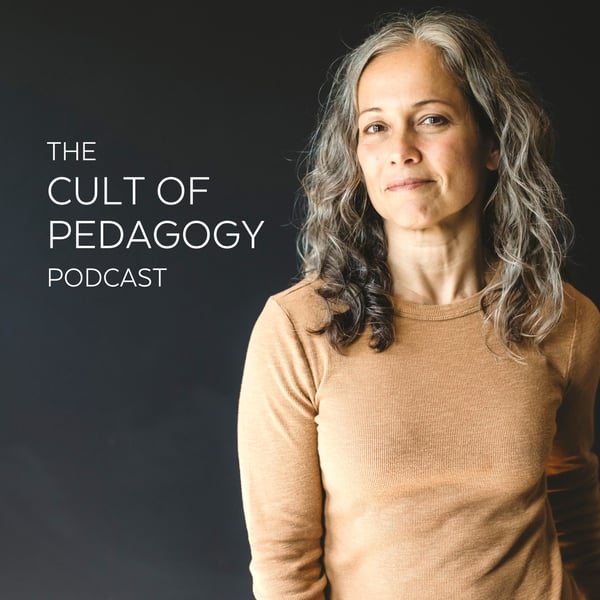243: Small Changes to Make Your Classroom More Neurodiversity-Affirming
The Cult of Pedagogy Podcast
Jennifer Gonzalez
4.8 • 2.4K Ratings
🗓️ 3 February 2025
⏱️ 70 minutes
🧾️ Download transcript
Summary
As our understanding of the human mind gets more sophisticated and nuanced, we're learning how to identify neurodivergence, how to appreciate it, and how to help those who fit under that umbrella navigate the world better. In this episode I'm joined by Emily Kircher-Morris and Amanda Morin, authors of the new book Neurodiversity-Affirming Schools. The book offers all kinds of specific guidance that will help teachers reshape their classrooms into places that offer flexible options for students with a wide range of "wiring." In today's episode, they'll share four actionable changes you can make right now to begin that reshaping.
Thanks to Boclips Classroom and Brisk Teaching for sponsoring this episode.
To read a full transcript of this episode and get links to all the resources we talk about, visit cultofpedagogy.com/neurodiversity-affirming/.
Transcript
Click on a timestamp to play from that location
| 0:00.0 | This is Jennifer Gonzalez, welcoming you to episode 243 of the Cult of Pedagogy podcast. |
| 0:05.1 | In this episode, we're going to talk about a few small changes that will make your classroom more |
| 0:09.2 | neurodiversity affirming. |
| 0:28.5 | Over the last 10 years or so, the word neurodivergent has become a more common part of our everyday language. |
| 0:38.5 | And while not everyone agrees on an exact definition of this umbrella term, it's frequently used to describe people who are on the autism spectrum, people with learning disabilities, and people with attention differences like ADD and ADHD, among others. |
| 0:44.6 | As our understanding of the human mind gets more sophisticated and nuanced, we're learning |
| 0:49.0 | how to identify neurodivergence, how to appreciate it, and how to help those who fit under |
| 0:53.9 | that umbrella |
| 0:54.5 | navigate the world better. One place where that process has been happening quite a lot is in |
| 0:59.8 | schools. We've definitely made progress with neurodivergent students. But the progress has been |
| 1:05.9 | spotty, and it's also framed our population in a sort of binary way, with neurodivergent students on one side and everyone else on the other. |
| 1:15.4 | The adjustments made in schools are often treated as special accommodations made for a special few. |
| 1:21.2 | But one of the things we're learning about neurodivergence is that it's not necessarily an either or. |
| 1:27.4 | It's not that you're either 100% neurodivergent is that it's not necessarily an either or. It's not that you're either 100% |
| 1:29.8 | neurodivergent or you have a standard issue normal brain. The way our brains are wired puts all of us |
| 1:37.4 | somewhere on a spectrum or a few spectrums really with each individual person having their own |
| 1:43.4 | unique wiring. |
| 1:45.0 | And that's why the title of this episode uses the term neurodiversity instead of neurodivergent. |
| 1:51.0 | This shift in language acknowledges that everyone's brain is different, and if we set up our schools in a way that makes room for many variations, we'll all be better off. |
| 2:05.2 | My guests today are going to help us learn some simple ways we can create those schools. |
| 2:12.6 | Amanda Morin is a neurodivergent neurodiversity activist, author, early childhood specialist, and speaker. |
| 2:19.7 | Emily Kircher-Morris is a mental health professional, neurodiversity advocate, author, and host of the Neurodiversity Podcast, which as a podcast listener, you should definitely check out. |
... |
Transcript will be available on the free plan in -56 days. Upgrade to see the full transcript now.
Disclaimer: The podcast and artwork embedded on this page are from Jennifer Gonzalez, and are the property of its owner and not affiliated with or endorsed by Tapesearch.
Generated transcripts are the property of Jennifer Gonzalez and are distributed freely under the Fair Use doctrine. Transcripts generated by Tapesearch are not guaranteed to be accurate.
Copyright © Tapesearch 2025.

